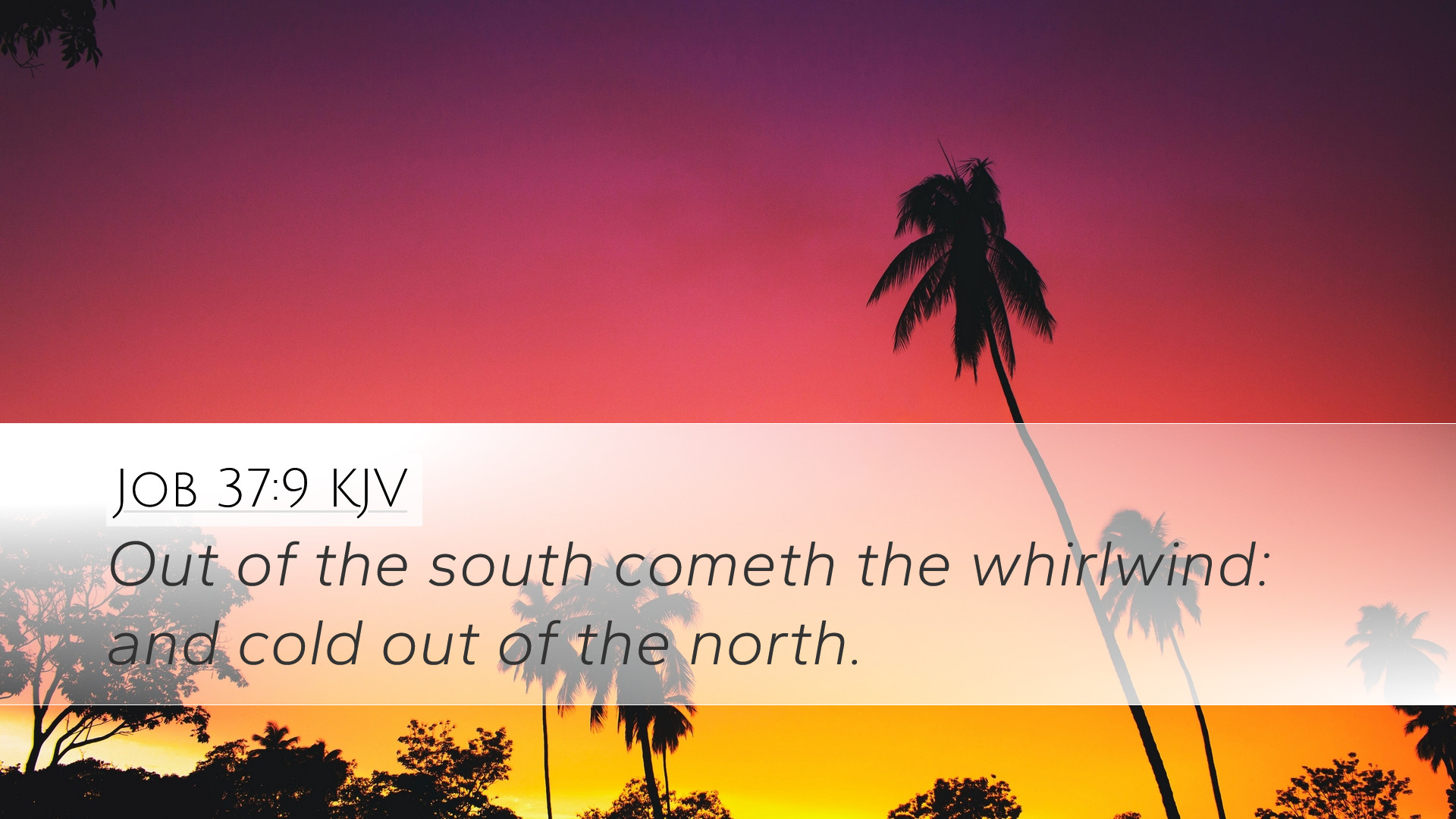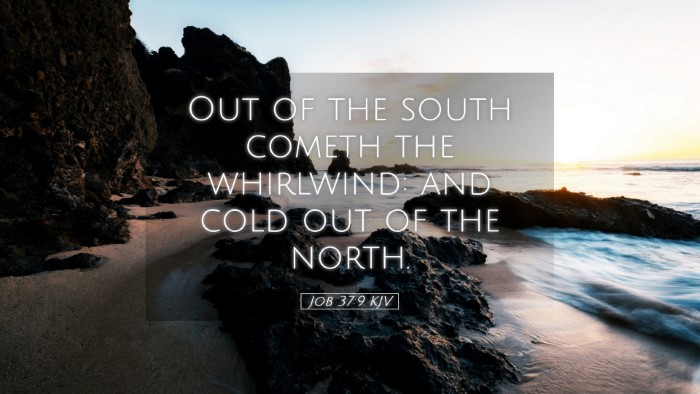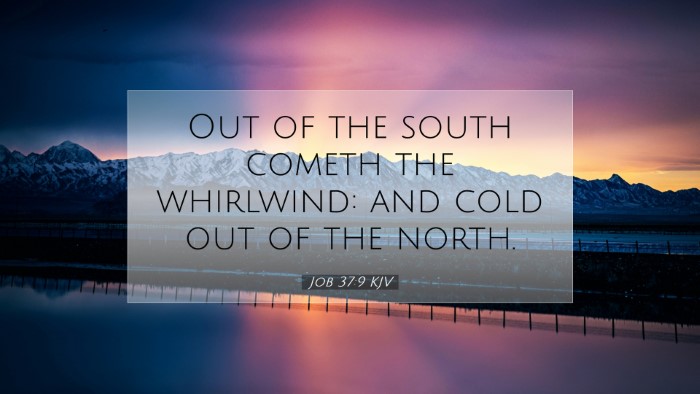Old Testament
Genesis Exodus Leviticus Numbers Deuteronomy Joshua Judges Ruth 1 Samuel 2 Samuel 1 Kings 2 Kings 1 Chronicles 2 Chronicles Ezra Nehemiah Esther Job Psalms Proverbs Ecclesiastes Song of Solomon Isaiah Jeremiah Lamentations Ezekiel Daniel Hosea Joel Amos Obadiah Jonah Micah Nahum Habakkuk Zephaniah Haggai Zechariah MalachiJob 37:9
Job 37:9 KJV
Out of the south cometh the whirlwind: and cold out of the north.
Job 37:9 Bible Commentary
Commentary on Job 37:9
Verse: "Out of the south cometh the whirlwind: and cold out of the north." (Job 37:9, KJV)
Introduction
This verse from the Book of Job appears amidst God's magnificent display of power and nature's fury as described by Elihu. It serves as an important reminder of divine sovereignty over creation and the control God has over the elements. Public domain commentaries provide invaluable insights into the theological implications of this passage, illuminating the character of God through the lens of natural phenomena.
Contextual Background
Job is a profound literary and theological work exploring suffering, righteousness, and the nature of God. Job 37 falls within Elihu's discourse, in which he attempts to articulate God's greatness and justice amidst Job's suffering. Elihu highlights God's communication to humanity through nature, illustrating that the natural world is a medium through which God communicates His power and wisdom.
The Whirlwind and Its Significance
Observations from Commentaries:
-
Matthew Henry:
Henry emphasizes the whirlwind as a manifestation of God's awesome power. It is indicative of divine judgment and serves as a signal of God's presence. The south wind is often associated with heat and storms, while the north wind brings cold, symbolizing the dual nature of God's attributes—His heat of zeal in judgment, contrasted with His mercy and refreshing grace.
-
Albert Barnes:
Barnes notes that the mention of the "south" and the "north" highlights the diverse influences of weather that God controls. The phenomena symbolize God's might and illustrate the fact that even the natural world obeys His will. The reference to a whirlwind, which can bring both destruction and renewal, also draws attention to the complexity of God's providence in the world.
-
Adam Clarke:
Clarke underscores the importance of considering the natural elements as both fearful and beautiful. He suggests that the whirlwind serves as a metaphor for the tumultuous experiences of human life. Just as the winds change and tumult arises, so too do the trials and tribulations faced by humanity. This imagery calls believers to trust in God's overarching authority over chaos and uncertainty.
Theological Reflections
Nature as Revelation:
The natural world's phenomena are often seen as a means through which God reveals His character and intentions. The whirlwind represents not only the power and majesty of God but also acts as a reminder of His active involvement in creation. John Calvin, though not directly cited here, resonates with this idea of creation as a means of divine communication.
Divine Sovereignty:
Job 37:9 reassures believers of God's sovereignty over every element of the natural world. The winds coming from different directions reflect God's ability to orchestrate events (both gentle and tempestuous) for His purposes. This understanding invites believers to acknowledge the presence of God even in chaotic circumstances, encouraging faith in His providential oversight.
Pastoral Implications
For pastors and spiritual leaders, the exhortation from Job 37:9 can be incorporated into teaching about God's nature in relation to the natural world and human suffering. It supports messages regarding trust in God's plan during turbulent times. It also serves as a theological anchor in counseling settings where individuals are facing 'whirlwinds' in their lives.
Conclusion
Job 37:9 serves as a profound reminder of the dual realities of God’s might and mercy as exhibited through the natural world. The insights drawn from the public domain commentaries by Henry, Barnes, and Clarke build a multi-dimensional view of this scripture, encouraging believers to reflect on God’s majesty and authority over creation. Understanding this verse compels believers to engage with God not just in times of calm but especially amid life’s storms, trusting fully in His omnipotence and divine wisdom.


